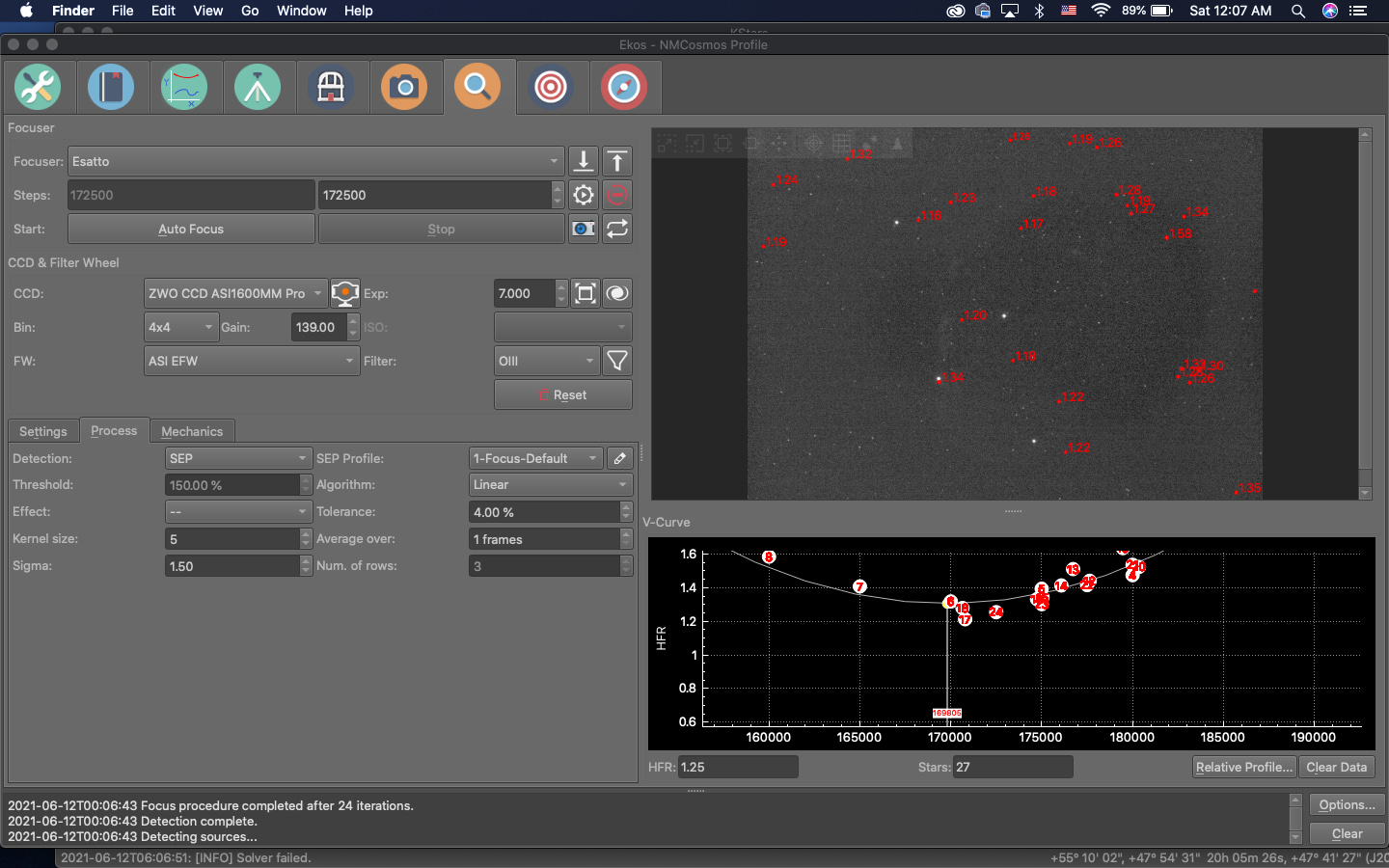When using the linear autofocus routine, it does a really good job at calculating the best focus position, but then when the routine is dine, it chooses a position that is worse than the calculated one, In fact, when using a long focal length scope, it seems to find the best focus position quickly, in about 7 or 8 exposures. But then it keeps adding more and moire exposures - around 25 or 30 - which never ends well. If EKOS had stopped after 10 exposures and just set the focuser to the best calculated position, it would have been fast and accurate. But instead it spends much more time and fails to find a better solution. This is a big issue with long focal lengths where the exposures need to be 7 to 10 seconds long. It makes focusing take 10 minutes or longer, which is not ideal where I live as the temperature alway drops 50F (10C) every night.
Additionally I wish we could adjust some kind of "resolution" of the focuser. With the Esatto focuser, there are 240,000 steps! But at 2,000mm focal length, you really cant see any difference between 160,000 and 160,500. But EKOS tries to fine tune the focus back forth between 160,500 and 160,300 etc. It's a waste of precious time. 160,000 to 160,400 are the same.
But just solving the main issue - and having EKOS choose the already calculated best-focus position would be huge time saver.
Here are two screen shots from last night.
The first shows the calculated focus position of 170,000. But EKOS selected 172500 instead! The HFR value was 1.25 arc seconds.
The second image shows that when I manually adjusted the focuser back to the
calculated position, the HFR improved to 1.16. The calculated position is almost always better than the one finally selected by EKOS. It seems like an easy fix to just choose the already calculated focus when stopping the focus routine. It's what I end up doing anyway manually, but it means I can't use autofocus unattended.


